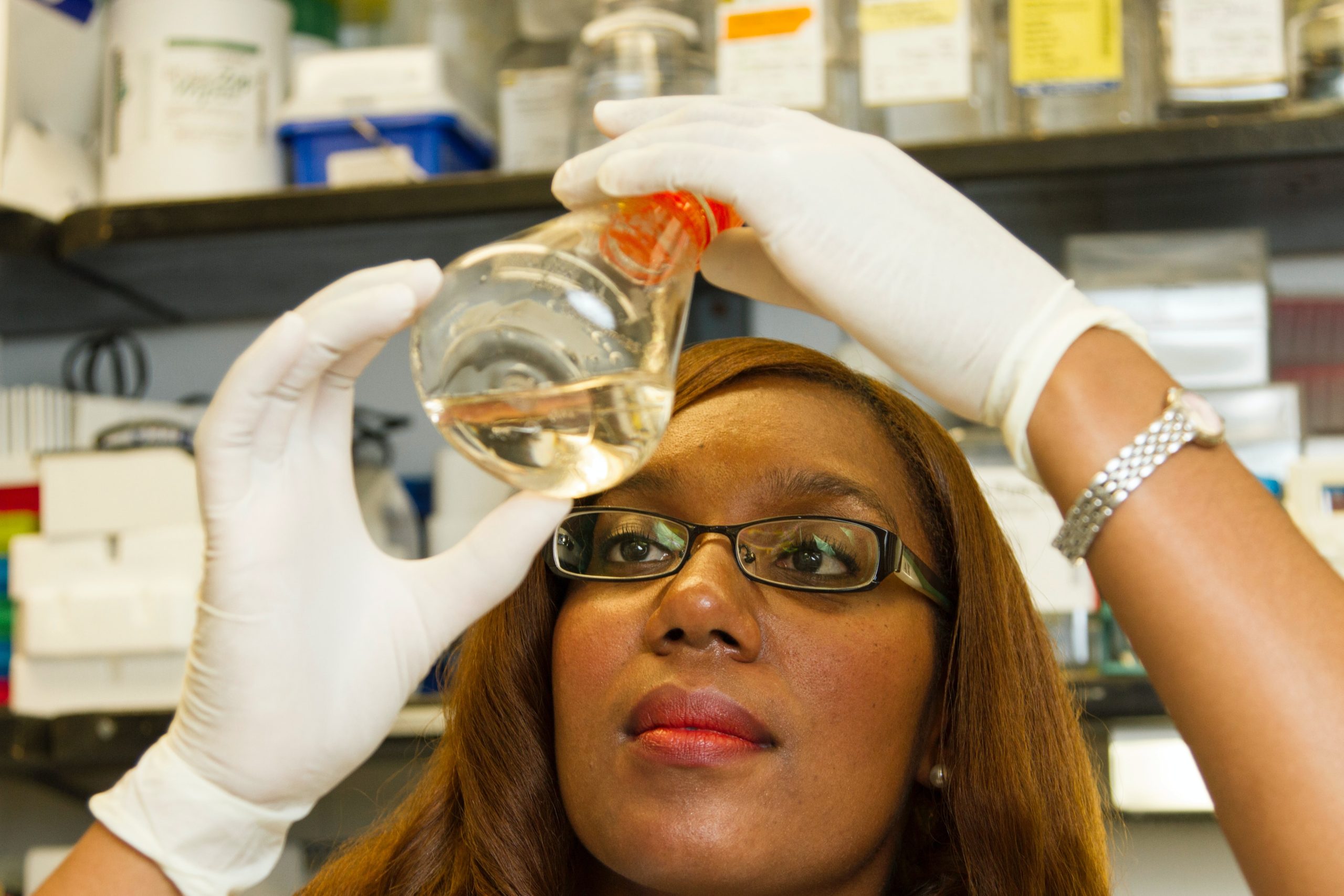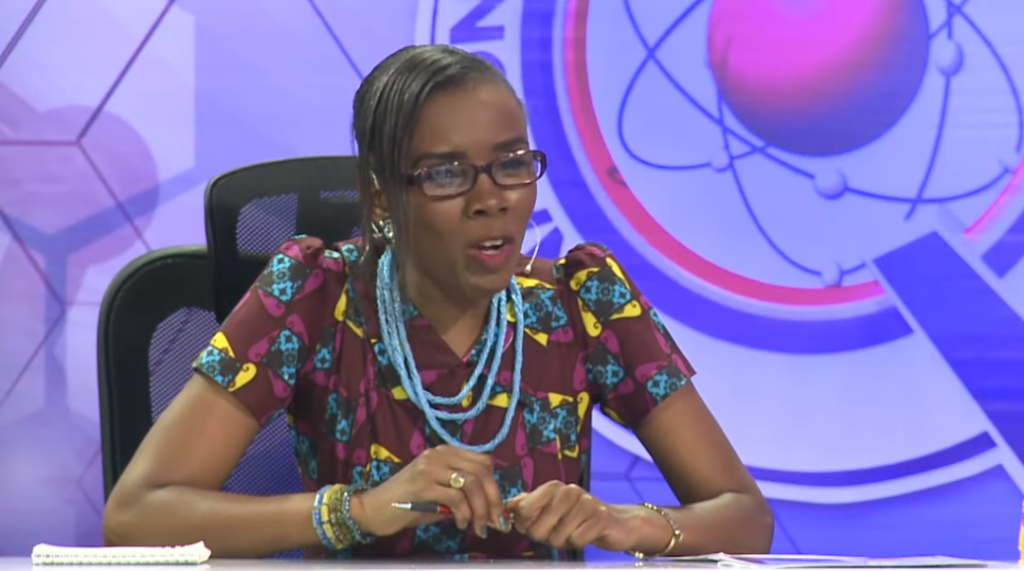Groundbreaking Workshop on AI and Technology-Facilitated Gender-Based Violence at AWiM24
Trending
Saturday May 10, 2025
Trending

When Hana Saada, a doctoral female student at the University of Algiers Benyoucef Benkhedda, looks at the news, she barely sees women in science on the pages of the newspaper or on screen. There’s barely a sound of them on radio too. One would be think that there are few or no women in science.
The former is true to some extent. Over and over, researchers have confirmed that there are few women in the fields of science, technology, engineering and mathematics (STEM). In Africa, according to the 2020 Global Education Monitoring Report by UNESCO, the low representation of women in science and mathematics in higher education, is reflected in the scarcity of female science and math teachers. This in turn affects equal opportunities for girls at the school level.
Moreover, a UNESCO report published to coincide with the International Day of Women and Girls in Science in March 2021, found low proportions of women researchers as a share of total researchers in engineering and technology. In Chad, one in 100 of researchers are women; in Mali, women make up five in 100 of researchers; in Burundi, eight in 100 researchers are women and in Cote d’Ivoire, women make up nearly 10 in 100 of the total researchers.
Over the years, theories have been advanced for the low rates of participation of women in science. They boil down to gender stereotypes and the action and inaction that is influenced by those stereotypes.
For instance, Prof Pinkie Zwane, the pro-vice-chancellor (administration) at the University of Eswatini, notes that while there is a high graduation rate of women in health-related fields, as highlighted in the UNESCO report, a closer look reveals that they work in roles that are stereotypically associated with women, such as nursing and lower-cadre professions.
Stereotypes follow women into the unsupportive, hostile and male-dominated research environments, that pay no regard to the caregiving roles of women, says Prof Zwane.
A study of 227 alumni of STEM doctoral programmes in West, East and Southern Africa, done by Monica Fisher, an economics and gender specialist at the International Center for Insect Physiology and Ecology (ICIPE) in Kenya, found that female doctoral students face adversity.
After years of studying the problem from various angles and its effects, researchers have advanced numerous solutions that can be summed up in a sentence: There is need for inclusive policies that make space for women in usually male-dominated environments.
Saada, the doctoral student in Algiers, told AWiM News that one way to support women, is to introduce a range of prizes that celebrate and promote the work of African women in academia and science.
“In addition, setting up programmes to exchange knowledge and expertise among scientists from all African countries and granting scholarships and financial aid, would lead to more female pioneers in many scientific fields,” she said.
Fisher’s research on what needs to be done to boost women in doctoral programmes in Africa, found that support needs to go beyond money, and that financial support needs to be women-friendly.
“The needs include launching scholarship programmes for women that cover not just tuition and fees, but also offer a competitive stipend. There is also need for family-friendly policies that are supportive of women’s roles as wives and mothers. Thirdly, there is need for broader linkages and networks for women in STEM, including mentorship and supervisory support that is tailored to the specific needs and circumstances of women, along with institutional efforts to create environments that are more inclusive, equitable and just,” said Fisher.

Saada says that supporting women by investing in their education, their professional skills, their science, their technology and their innovations, sets a direct path towards economic growth. Support, she adds, should include visibility of the work of women in STEM in media, given that women represent a considerable segment of the population and given the benefits that would accrue from holistic support.
“Inviting African women in STEM to the media raises awareness on the need to adopt and implement national and regional plans, legislation, policies, strategies, budgets and justice mechanisms. It also fights the stereotypical and reductive roles commonly assigned to women with a view of undermining their presence and impact in society,” she told AWiM News.
Prof Alice Pell, the dean adviser for international relations at the College of Agriculture and Life Sciences at Cornell University in the US, adds that while commitment to women’s education and providing a welcoming environment for female students are key to increasing their STEM participation, media has a role to play too.
Given the influence media has on the masses, it plays a role in enhancing women’s presence in the academic and scientific spheres, when women in STEM, including pioneers, are invited to speak as experts.
“Currently, the use of media to promote women’s presence in STEM disciplines is minimal. Media, whether audiovisual, print or electronic, should endeavour to pay serious attention to campaigns that will promote social change and fight against cultural stereotypes and the portrayal of women in STEM with certain labels,” she told AWiM News.
Given the place media holds in society, Felicia Kuagbedzi – the communications and publications officer at the Association of African Universities in Ghana – says that visibility of women in STEM also ensures that gender dimensions are taken into consideration in policy designs and that gender equality is prioritised in STEM education policies.
Media visibility, according to Moses Osiru, the manager of the regional coordination unit of the regional scholarship and innovation fund (RSIF) at ICIPE, can improve awareness of the key challenges facing African women in STEM disciplines among policymakers such as parliamentarians and government officials.
For instance, RSIF has identified the need for improved awareness of women-friendly aspects of programmes such as their scholarship call and the need to adopt a proactive recruitment model for women. They have also learnt how to implement affirmative action and equal opportunity practices and to pay attention to gender in all their capacity building. Media, explains Osiru, can play a role in getting these practices into the mainstream by ensuring their visibility and by highlighting their impact.
Media, adds Kuagbedzi, can also fight prejudice against women (and women in science, in particular) instead of perpetuating stereotypes.
“By generating visibility for women in STEM and projecting their success stories, media can debunk misconceptions and change the perceptions that women are not able to succeed in STEM,” she said, adding that girls are attracted to STEM when they interact with media featuring women in STEM.
“Journalists also have a responsibility of making STEM attractive by featuring publications, articles and videos in a fun and attractive way, and without employing unnecessary scientific jargon in their reportage,” said Kuagbedzi.

The power of media cannot be downplayed, as the experience of Elsie Effah Kaufmann, an associate professor of engineering sciences at the University of Ghana, shows.
“I see media as an indispensable partner in the effort to bring visibility to the work of women in STEM and to raise awareness about the capability and contribution of women to the national and international discourse,” she said.
As the host of Ghana’s hugely popular National Science and Math Quiz Programme, Prof Kaufmann has seen firsthand the role and power of media in promoting STEM, and the huge benefits that accrue from the partnership between media and those who deliver STEM education.
“The lack of positive role models has been identified as one of the factors that contribute to the underrepresentation of women and girls in STEM. The media can make role models accessible to many, who may otherwise have not had a chance to interact with or known the work of such individuals,” said Kaufmann, adding that this way, media can eliminate geographical and cultural barriers and dispel the negative stereotypes about women in STEM.
Kaufmann adds that many women and girls in STEM roles were inspired to pursue careers in STEM from seeing highly competent women in science and science quiz contestants and hosts on TV, print or radio, and realising that such roles were not beyond them.
“I am grateful to the media, which has been willing to tell my story (and the story of my colleagues) to inspire the next generation of scientists, technologists and engineers,” said Kaufmann, who also serves as president of the Ghana Society of Biomedical Engineers.
We’re not gonna spam. We’ll try at least.

Copyright 2020. African Women In Media
Copyright 2020. African Women In Media
Recent Comments